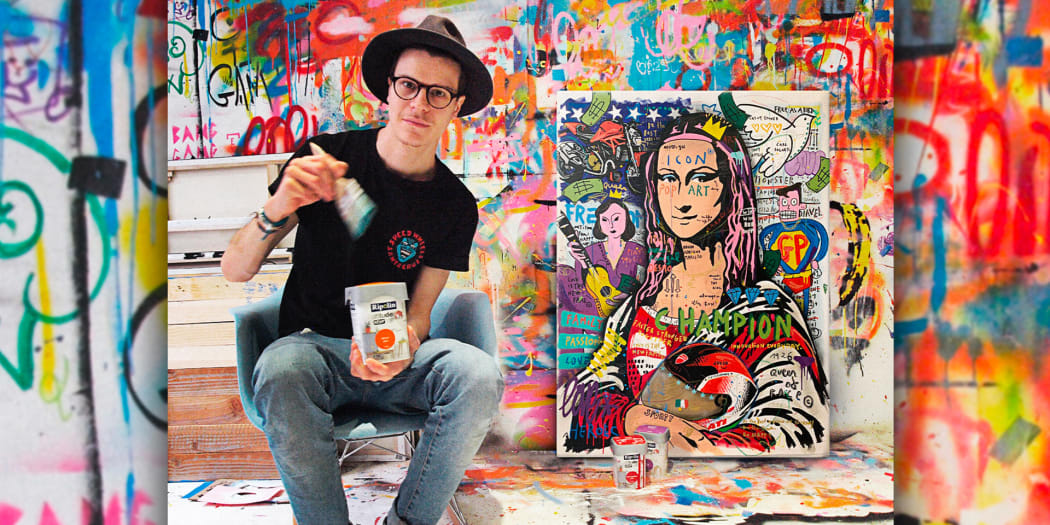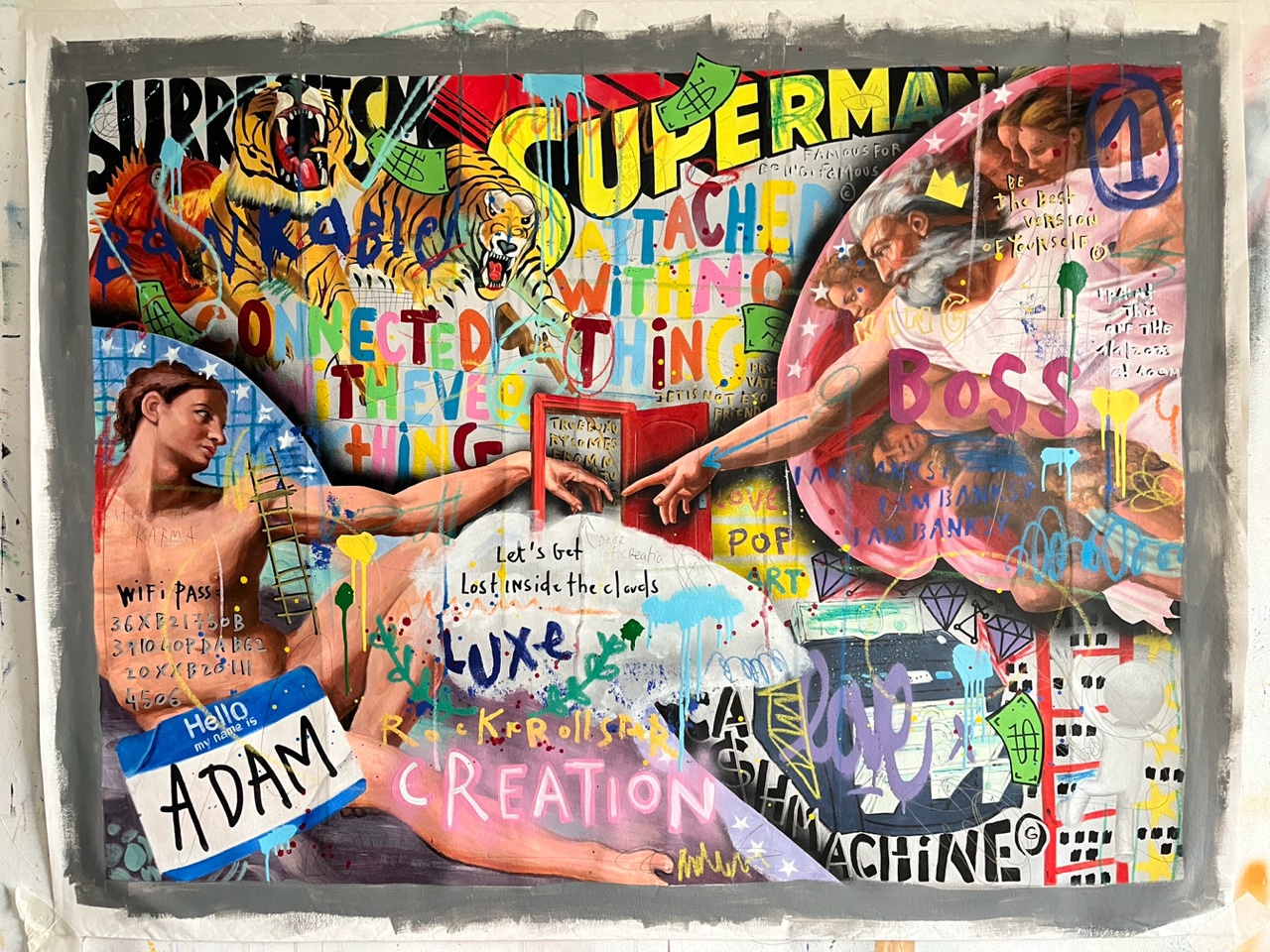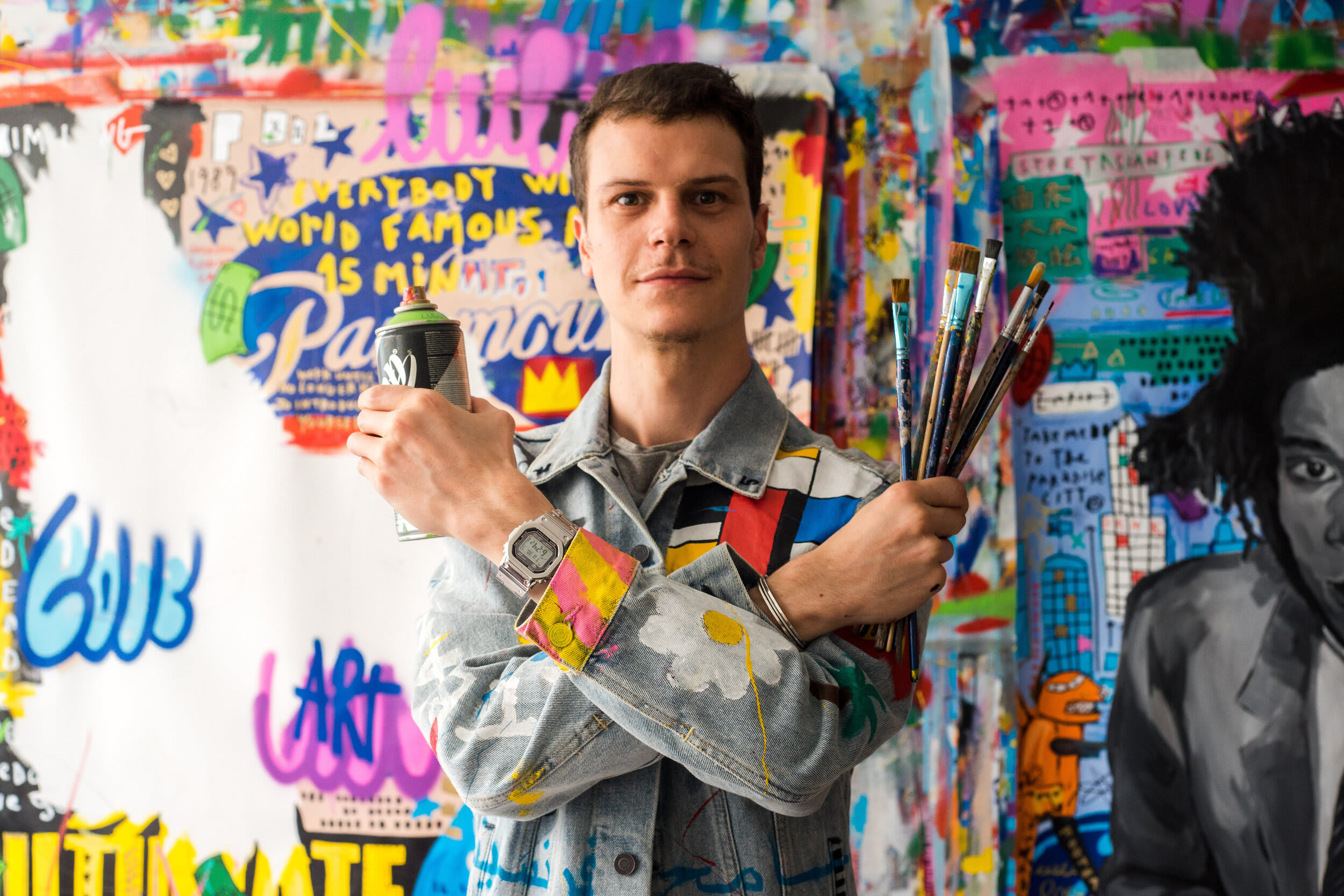
In the world of contemporary art, few manage to capture modern culture as vividly as Jisbar. The French artist is a whirlwind of color, codes, and iconography. Through his unique visual language, Jisbar explores the intersections of art, society, and history. By blending influences from pop art, street art, global culture, and art history, he has crafted a distinct visual code that is both familiar and distinctive. Jisbar isn’t simply making art—he’s creating a language that resonates deeply with viewers while offering a fresh perspective on the world.

Who Is Jisbar?
Born in 1989 in Paris, France, Jean-Baptiste Launay—better known as Jisbar—developed his artistic style in response to his environment. Inspired by the Parisian streets, a vibrant landscape of urban art, and the French passion for fine art and culture, Launay picked up a paintbrush with the goal of merging contemporary influences with classical traditions.
Though not formally trained, Jisbar channeled his passion into painting, seeking to revive classical art while making it accessible to a modern audience. His works are wrapped in a visual language that draws on contemporary culture, art history, and the bold aesthetics of pop and street art.
As a self-taught artist, Jisbar doesn’t follow the rules—he breaks them.
Reimagining iconic works such as Leonardo da Vinci’s Mona Lisa, Sandro Botticelli’s The Birth of Venus, and Gustav Klimt’s The Kiss, Jisbar places these classical subjects in unexpected contexts. He also incorporates contemporary icons like Freddie Mercury, Charlie Brown, and the Statue of Liberty. Jisbar’s canvases feel familiar yet unconventional, immersing recognizable figures in landscapes filled with colors, symbols, and codes. In doing so, he reclaims these icons, infusing them with his own narrative.

His artistic style thrives on this rebellious, contemporary twist. Jisbar doesn’t conform to the confines of the art world; instead, he creates a style that evolves organically from the traditions of art history. By blending high and low culture, classical references, and modern pop culture, he paints works that are instantly recognizable yet provocatively reimagined. His pieces speak a contemporary language, adding layers of thought and artistry that make us pause and reflect.
While Jisbar draws on well-known works, his use of vibrant backgrounds, coded symbols, and a distinct color palette ensures that his art feels entirely original.
What makes Jisbar’s work so captivating is how he subverts our expectations. We think we know these subjects intimately, but in his hands, they transform into something unpredictable. He draws us in with nostalgia but captivates us with the bold, fresh perspectives that challenge what we thought we understood.

The Style: Where Street Art Meets Pop Art
Jisbar’s art balances between the worlds of street art and pop art. His canvases are a playground for exploration, merging the aesthetics of these two artistic styles.
In his reinterpretations of iconic imagery—ranging from pop culture references to famous artworks—Jisbar echoes the ethos of pop artists like Andy Warhol. His relatable compositions democratize fine art, making it accessible to a broader audience.
Yet his work also carries the raw energy of street art, drawing comparisons to figures like Jean-Michel Basquiat. With graffiti-like slogans, layered symbolism, and an urban visual language, Jisbar’s pieces embody the spontaneity of street art.

While his layered narratives may remind some of Basquiat or the graphic symbolism of Keith Haring, Jisbar’s voice is unmistakably his own. His canvases become spaces where classical references meet modern pop culture, creating a dialogue between the past and the present.
It’s more than just art—it’s a conversation. Jisbar engages with our shared experiences, remixing the familiar into something entirely new. His work invites us to revel in the chaos of our pop culture universe while seeing it through a fresh lens.
Jisbar’s Influence on Contemporary Art
By fusing the energy of street art with the accessibility and playfulness of pop art, Jisbar creates works that feel both timeless and distinctly of the moment. His art isn’t just a reflection of the world—it’s a celebration and critique of the culture we live every day.

Jisbar’s influence extends beyond the canvas. His collaborations with brands, designers, and creatives across industries demonstrate that art can exist everywhere—not just in galleries, but also in the everyday spaces we frequent. This breaking down of traditional boundaries is central to Jisbar’s appeal. His work challenges the notion that art is reserved for an elite few, making it feel accessible, relevant, and alive.
Jisbar, The Artist of Now
Jisbar isn’t just an artist to watch—he’s redefining what it means to create in the 21st century. By blending the classical with the contemporary, he’s crafting a world of art that feels both groundbreaking and approachable.
More than a participant in the conversation about the future of art, Jisbar is leading it.

